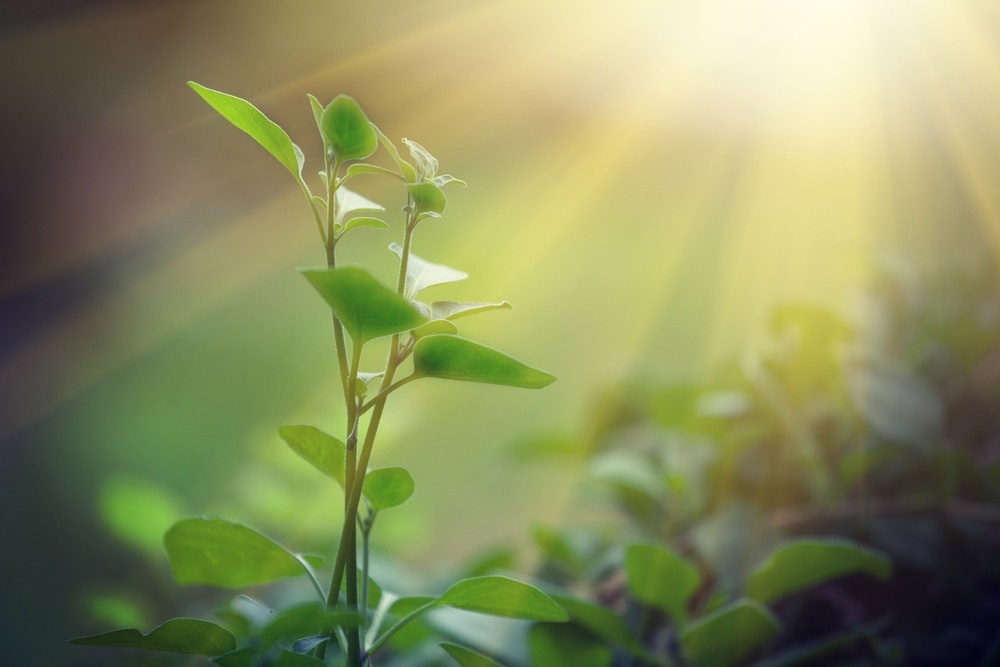Scientists are amazed at a unique state when atoms are cooled to near zero. Trees outside their window absorb sunlight and convert it into new leaves. The two appear unrelated—but a recent study from the University of Chicago reveals that they are not as dissimilar as they appear on the surface.

Image Credit: Greg Brave/Shutterstock.com
The research, published on April 28th, 2023, in PRX Energy, discovered atomic-level linkages between photosynthesis and exciton condensates—a peculiar state of physics that permits energy to flow frictionlessly through a material. According to the authors, the discovery is scientifically exciting and may reveal new ways to think about engineering electronics.
As far as we know, these areas have never been connected before, so we found this very compelling and exciting.
David Mazziotti, Study Co-Author and Professor, University of Chicago
Mazziotti’s laboratory focuses on simulating the complex interactions of atoms and molecules that exhibit intriguing features. Because these interactions cannot be observed with the naked eye, computer modeling can provide scientists with insight into why the behavior occurs—as well as a foundation for designing future technology.
Mazziotti and research co-authors Anna Schouten and LeeAnn Sager-Smith, have been modeling what happens at the molecular level during photosynthesis.
A photon from the sun causes a change in a specially designed molecule when it touches a leaf. The energy knocks an electron loose. The electron, and the “hole” it formerly occupied, can now travel across the leaf, transporting the sun’s energy to another place where it initiates a chemical reaction that produces sugars for the plant.
That moving electron-and-hole pair is referred to as an “exciton.” The scientists found something strange when they adopted a birds-eye view and modeled how many excitons travel. They saw patterns in the pathways of the excitons that appeared to be very familiar.
In reality, it resembled the behavior of a material known as a Bose–Einstein condensate, also known as “the fifth state of matter.” Excitons in this material can combine to form an identical quantum state, similar to a group of bells all ringing exactly in tune.
This permits energy to travel freely around the material with zero friction. (These unusual behaviors fascinate scientists because they can be the seeds of incredible technology—for example, MRI devices are based on a similar state known as superconductivity).
According to models developed by Schouten, Sager-Smith, and Mazziotti, excitons in a leaf can sometimes join in ways similar to exciton condensate behavior.
This came as a complete surprise. Exciton condensates are only observed when the substance is drastically chilled below room temperature. It would be like watching ice cubes form in hot coffee.
Photosynthetic light harvesting is taking place in a system that is at room temperature and what’s more, its structure is disordered—very unlike the pristine crystallized materials and cold temperatures that you use to make exciton condensates.
Anna Schouten, University of Chicago
This impact is really not complete, according to the scientists, and is more analogous to “islands” of condensates forming. “But that’s still enough to enhance energy transfer in the system,” said Sager-Smith. In fact, their models imply that it might double efficiency.
This opens up new avenues for developing synthetic materials for future technology.
A perfect ideal exciton condensate is sensitive and requires a lot of special conditions, but for realistic applications, it’s exciting to see something that boosts efficiency but can happen in ambient conditions.
David Mazziotti, Study Co-Author and Professor, University of Chicago
Mazziotti added that the discovery fits into a bigger approach that his team has been researching for a decade.
Because the interactions between atoms and molecules in processes like photosynthesis are extremely complex—difficult even for a supercomputer to handle—scientists have traditionally had to simplify their models in order to grasp them. However, Mazziotti believes that some parts should be retained. “We think local correlation of electrons are essential to capturing how nature actually works.”
The research was funded partially by the National Science Foundation’s QuBBE Quantum Leap Challenge Institute.
Journal Reference:
Schouten, A. O., et al. (2023). Exciton-Condensate-Like Amplification of Energy Transport in Light Harvesting. PRX Energy. doi.org/10.1103/prxenergy.2.023002.